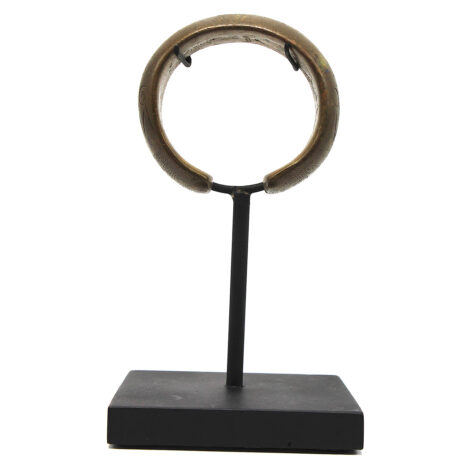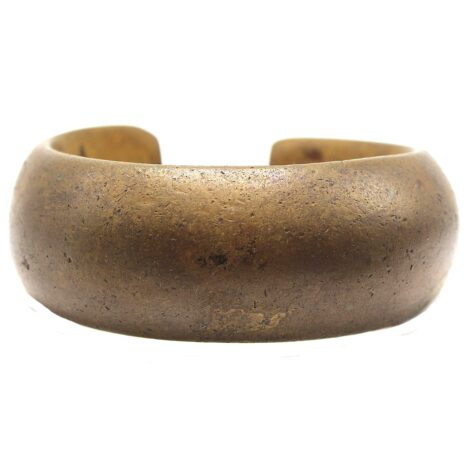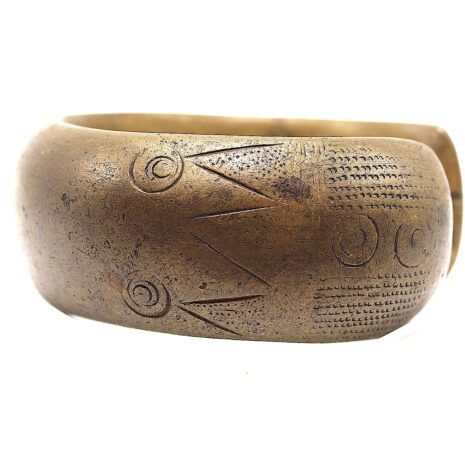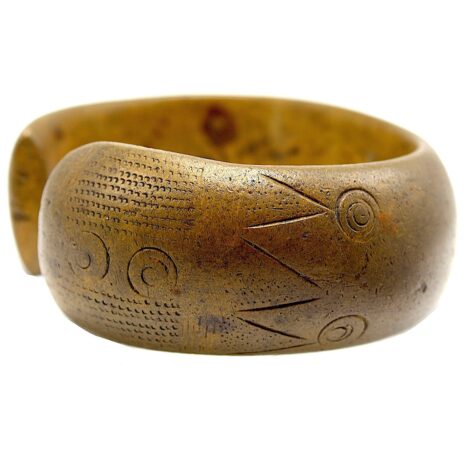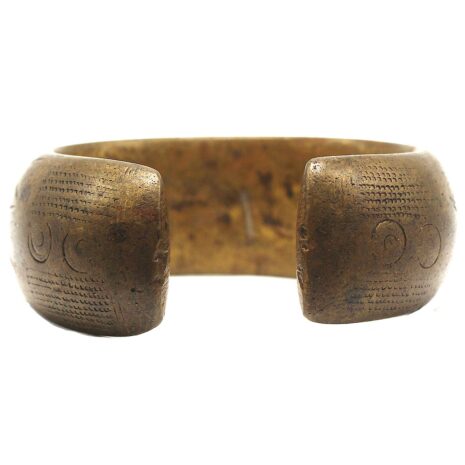Antique Fulani Manilla Currency Bracelet, West Africa (3155)
Original price was: $195.00.$155.00Current price is: $155.00.
H: 2.625” W: 3” Thick: 0.25” Circum. 8.25” | FREE SHIPPING WITHIN CONTINENTAL U.S.
Found in Nigeria, this large C-shaped beautiful antique manilla has rounded smooth surface with fine etched linear design, circles, swirls, stipples, and V-shapes. Fine aged patina, comes with wood and metal stand.
Description
The Fulani are the most numerous nomadic people on earth and one of West Africa’slargest ethnic groups. They have created metal arm and ankle bracelets for centuries as symbols of wealth and status, adornments, ceremonial objects, and for barter. Their bracelets are present throughout West Africa. As Muslims, they cannot use figural designs and instead use abstract geometric designs. During Africa’s colonization in the 1500s, the British, French and Dutch copied African bracelets and manufactured their own versions called manillas. Manillas became slave trade currency to purchase slaves for American and Caribbean plantations. Although European manillas were used extensively, the Fulani continued producing and wearing their manillas as currency until foreign traders were prohibited from using them as currency in1919. They were confiscated and melted down in the 1940s.This rounded Fulani manilla is from Nigeria. It has a smooth surface with etched geometric designs at the ends. It has multi-lined horizontals, rows of stippled verticals, etched circles, alternating triangles and stacked circles at its apex. Excellent condition with minor scratches and cracks consistent with age and use. It comes with a wood and metal stand. These manillas are often considered historical artifacts and collectibles.
This large beautiful antique brass/copper C-shaped manilla was found in Nigeria. It has a rounded smooth surface with fine etched linear design, circles, swirls, stipples, and V-shapes. In excellent condition with a fine aged patina. It has expected scratches and discolorations for age and use. It comes with a wood and metal stand.
Click here for Blog Manillas: Former African Trade Currency.
Additional information
| Place of Origin | Africa |
|---|---|
| Period | Antique (1200-1920) |
| Date | 18-19th Century |
| Materials and Technique | Bronze/brass/copper alloy |
| Dimensions (inches) | H: 2.625 W: 3" Thick: .25" Circum: 8.25" |
| Dimensions (metric) | H: 6.65 cm Width: 7.6 cm Thick: .635 cm Circum: 20.95 cm |
| Weight | 9.1 oz |
| Condition | Excellent, fine patina demonstrating age and use |
| Item Number | 3155VKM |
| Shipping Box Size |

